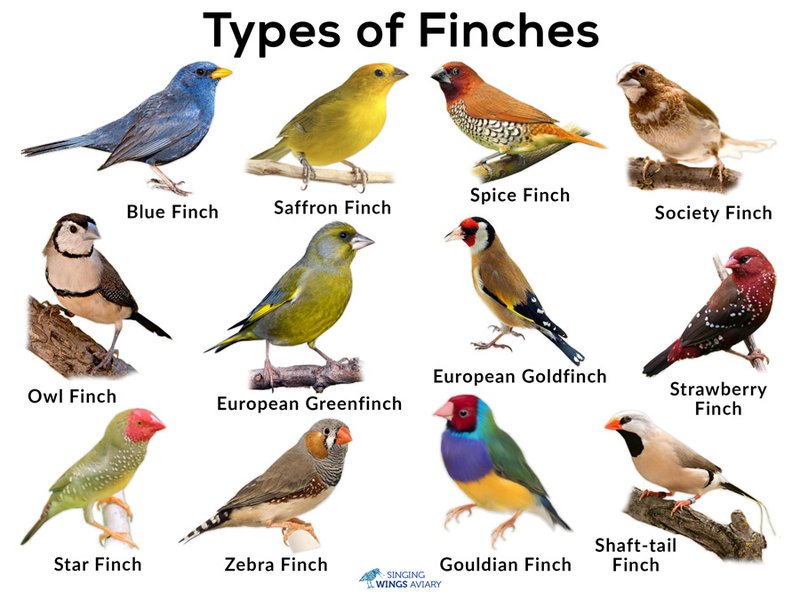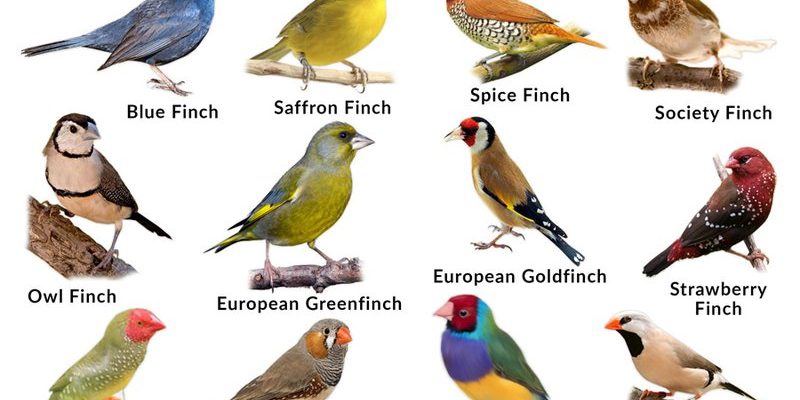
Understanding how to identify a finch in the wild can deepen your appreciation for nature. It’s like uncovering a hidden layer of the world around you. You might be wondering: “What should I focus on?” or “Are there specific clues to look for?” Let’s break it down together so you can become a finch-spotting pro!
Recognizing Finch Characteristics
Finches are small birds that belong to the family Fringillidae, and they come in various shapes and colors. Most finches are stocky with short, conical bills that are great for cracking seeds. The first step in identifying a finch is to notice its size and body shape. Most finches are around 4 to 7 inches long. If you see a small bird with a robust body perched on a feeder or a branch, you might be looking at a finch.
Another key characteristic to observe is the coloration. Finches often display vibrant plumage. For instance, the American Goldfinch boasts bright yellow feathers in the summer, while the male House Finch has a reddish hue on its head and chest. Both of these colors can help you differentiate them from other small birds in your area.
Additionally, finches have a distinctive flight pattern. They tend to flap their wings rapidly for a few beats, followed by short glides. Watching their flight can provide valuable clues about their identity. So, keep your eyes peeled and your ears open!
Habitats and Ranges
Understanding where finches live can also help you identify them. Most finches thrive in open fields, gardens, and forests. The American Goldfinch often hangs around weedy fields, while the Pine Siskin favors coniferous forests. If you find yourself in a lush garden or a natural park, you’re more likely to see these delightful birds.
Different finch species have varying ranges. For example, the House Finch is found mostly in urban areas across North America, while the Purple Finch is more commonly found in wooded regions in the northeast. You could find yourself spotting a vibrant goldfinch at your backyard feeder or a more elusive purple finch in a nearby forest.
By keeping an eye on their preferred environments, you’ll have a better chance of recognizing which finch is fluttering around. Knowing their habitats is like having a map—it guides you in the right direction!
Listening to Their Songs and Calls
Finches are known not just for their appearance, but also for their sweet melodies. Each species has its own unique song, and learning these can be a game changer when identifying them. For example, the American Goldfinch has a distinctive, cheerful “per-chick-o-ree” call, which is often heard during the breeding season.
If you hear a short, sweet tune, it could be a finch trying to communicate. Take a moment to listen carefully. Recording these sounds on your phone can help you compare them later! You might be surprised at how often you hear them when you start paying attention.
One of the best ways to practice your bird song recognition is to join local birdwatching groups. They often host events where you can listen and learn together, which is a wonderful way to enhance your understanding of finches.
Using Field Guides and Apps
When starting your journey into birdwatching, having the right tools can make all the difference. Field guides, both in print and digital forms, are a great resource. Books like “The Sibley Guide to Birds” provide detailed illustrations and descriptions, making it easier to identify finches in the wild.
If you prefer using technology, bird identification apps can be incredibly handy. Apps like Merlin Bird ID let you input your observations and help you narrow down your options based on size, color, and even song. They can be like having an expert right in your pocket!
Using these resources can bring your finch-spotting adventures to the next level. You’ll feel more confident and informed, and you might discover new bird species you’d never thought to look for before.
Observing Behavior and Feeding Habits
Take note of how finches behave. Finches often feed on seeds and are frequent visitors to bird feeders. If you have a feeder at home, put out sunflower seeds or thistle seeds to attract them. You’ll likely see goldfinches or house finches enjoying a meal.
Observing their social behavior can also be fascinating. Finches are often seen in small flocks, especially during migration. Watching them interact or forage together can give you insights into their species. For instance, if you see them darting about in a group, it’s likely a flock of goldfinches enjoying a seed buffet.
By paying attention to these habits, you’ll gain a better understanding of their unique identities. Who doesn’t love a good show from nature?
Staying Patient and Practicing Identification
Don’t forget that patience is key when birdwatching. You’re not always going to spot a finch right away. Give yourself time to observe and enjoy your surroundings. Grab a pair of binoculars, find a comfortable spot, and just watch. Sometimes, the more you sit quietly, the more you’ll notice.
Practice makes perfect! The more you engage in identifying finches, the easier it will become. Share your experiences with friends or fellow birdwatchers, and learn from one another. It’s like having a little community of nature enthusiasts to support your growing knowledge.
Remember, each encounter with a finch is a chance to learn something new, and that’s what makes birdwatching such a delightful hobby!
In conclusion, identifying finches in the wild is a bit like a treasure hunt. You’ll need to look for their unique characteristics, listen for their songs, and understand where they like to hang out. With a little patience and practice, you’ll soon find yourself recognizing these charming little birds in no time. So grab a field guide or download an app, and let your new adventure begin! Happy birdwatching!

